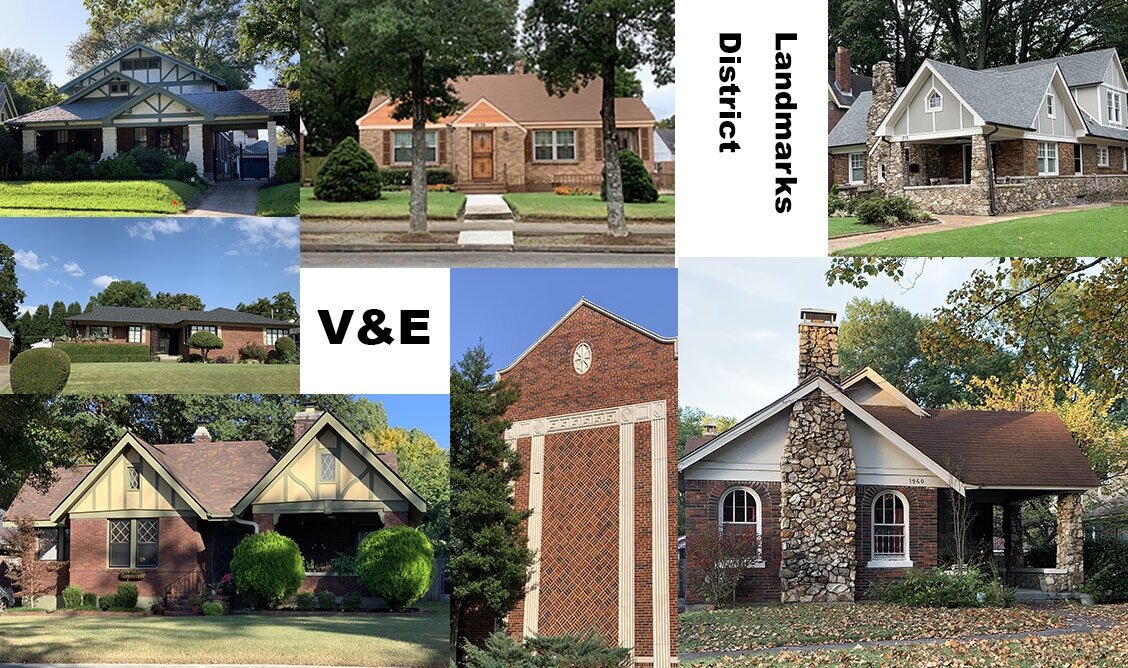
VECA Gains Historic Overlay District Zoning
With a unanimous 13 to 0 vote on July 20, the Memphis City Council provided the final stamp of approval needed to establish the Vollintine Evergreen Historic District (VEHD) as a local Historic Overlay District.
The vote also came after the Memphis Landmarks Commission and Land Use Control Board had previously approved the addition of 40 Greenview Circle homes, part of the Evergreen Gardens neighborhood. And with the passing of VEHD Ordinance No. 5789, the 880 acres of Vollintine Evergreen became the 17th and largest Memphis neighborhood to fall under historic zoning protections of the Memphis Landmarks Commission (MLC). Property owners will now be required to apply for a certificate of appropriateness (COA) from the MLC before substantially changing the outside appearances of their homes.
The approval by City Council was the final hurdle the neighborhood has scaled since their application process began. “A sincere thanks to Memphis City Council members for your approval of VECA’s application for a local historic zoning overlay,” read VECA’s July newsletter update. “A special thank you to our VECA community and residents for your continued support in our pursuit of local landmarks since 2017.”
But what exactly does it mean to be a Historic Landmark District? And why is it so important for neighborhoods?
Contrary to some beliefs, historic preservation is not anti-development. In fact, numerous studies and local experience show that such districts promote neighborhood stability, which is attractive to right-size development. Some also claim that historic district zoning restricts individual property rights for private homeowners. This concern is misplaced, as are already numerous building and zoning codes and requirements for streetscape, scaling and street setbacks that all structures must adhere to in order to gain approval for new and renovated construction. Further, historic districts have shown to foster and enable active community participation and empowerment.
And the tool used to apply these zoning protections – the neighborhood’s architectural guidelines – are just that: guidelines, used as a framework by residents, developers and the city’s Landmarks Commission to apply the neighborhood’s approved architectural standards.
In large part it’s all about zoning. The zoning overlay afforded by a city-recognized landmarks district upholds the neighborhood’s architectural significance and integrity. In actual month-to-month practice, it also helps keep house flippers, investors and absentee landlords from eroding the neighborhood’s overall integrity, it stabilizes property values, imposes legal limits on home demolitions, and gives the neighborhood jurisdictional tools to guide the future development of their own neighborhood.
National Register historic districts versus historic overlay districts
Many continue to question the difference between a historic district under the National Register of Historic Places versus these city and regional history districts. The primary difference is one of jurisdiction.
A neighborhood or district may be landmarked as historic under the guidelines of the National Register of Historic Places, which falls under the jurisdiction of the National Park System. Being listed on the NR means that a property or district is “worthy of preservation,” which does not automatically protect the district under any local zoning or development code regulations. Local landmark protections provide jurisdictional authority over historic zoning and protect from by-right demolitions.
With a unanimous 13 to 0 vote on July 20, the Memphis City Council provided the final stamp of approval needed to establish the Vollintine Evergreen Historic District (VEHD) as a local Historic Overlay District.
The vote also came after the Memphis Landmarks Commission and Land Use Control Board had previously approved the addition of 40 Greenview Circle homes, part of the Evergreen Gardens neighborhood. And with the passing of VEHD Ordinance No. 5789, the 880 acres of Vollintine Evergreen became the 17th and largest Memphis neighborhood to fall under historic zoning protections of the Memphis Landmarks Commission (MLC). Property owners will now be required to apply for a certificate of appropriateness (COA) from the MLC before substantially changing the outside appearances of their homes.
The approval by City Council was the final hurdle the neighborhood has scaled since their application process began. “A sincere thanks to Memphis City Council members for your approval of VECA’s application for a local historic zoning overlay,” read VECA’s July newsletter update. “A special thank you to our VECA community and residents for your continued support in our pursuit of local landmarks since 2017.”

